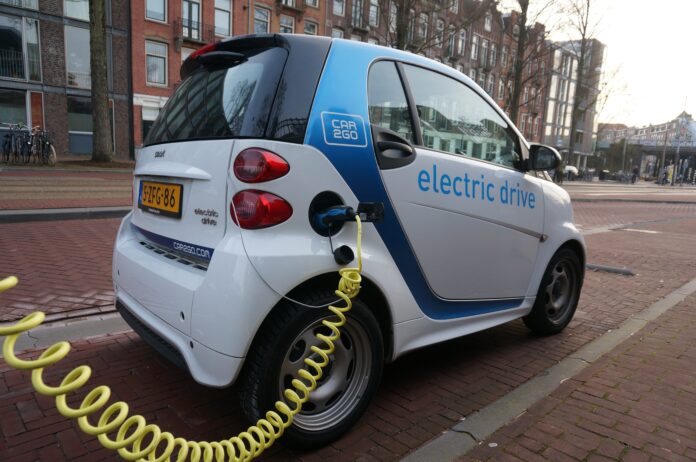Urban transportation has long been plagued by challenges such as traffic congestion, accidents, and environmental pollution. As cities continue to grow, the need for sustainable solutions becomes more pressing. One technology that holds immense promise in addressing these challenges is self-driving electric vehicles (SDEVs). In this article, we will explore the potential of SDEVs in revolutionizing urban transportation and reducing carbon emissions.
The Role of SDEVs in Urban Transportation
Self-driving technology brings several benefits to urban environments. Firstly, it can improve traffic flow by optimizing routes, reducing congestion, and minimizing delays. With SDEVs communicating with each other and the infrastructure, traffic patterns can be dynamically adjusted. Which will ensure the efficient movement of vehicles.
Secondly, self-driving technology enhances safety on the roads. Human errors contribute significantly to accidents, and autonomous systems can help mitigate this risk. SDEVs utilize advanced sensors, cameras, and artificial intelligence algorithms to detect and respond to potential hazards. Thereby reducing the number of accidents and saving lives.
Furthermore, SDEVs can increase accessibility for individuals with mobility challenges. Self-driving features can empower those who cannot drive due to disabilities or age-related limitations. Thus providing them with newfound freedom and independence.
In addition to the benefits of self-driving technology, electric vehicles (EVs) offer significant environmental advantages. EVs produce zero tailpipe emissions, reducing greenhouse gas emissions and mitigating climate change. By transitioning from fossil fuel-powered vehicles to SDEVs, cities can make substantial progress in achieving their carbon reduction goals.
Revolutionizing Urban Transportation
SDEVs have the potential to revolutionize urban transportation in various ways. One of the key transformations lies in the realm of ride-sharing and mobility services. By integrating SDEVs with ride-hailing platforms, cities can provide convenient and affordable transportation options for their residents. This integration can lead to a reduction in private car ownership, alleviating problems associated with parking space scarcity and traffic congestion.
Moreover, the optimization of public transportation systems through SDEVs can enhance their efficiency and effectiveness. Autonomous vehicles can be seamlessly integrated into existing public transportation networks, offering a flexible and adaptable solution to changing demand patterns. This integration can improve connectivity, increase accessibility, and make public transportation a more attractive option for commuters.
Another area where SDEVs can make a significant impact is last-mile delivery and logistics. Autonomous delivery services can revolutionize urban logistics by providing efficient and sustainable solutions. With self-driving electric delivery vehicles, cities can reduce traffic congestion, lower delivery-related emissions, and streamline the movement of goods within urban areas.
Challenges and Considerations
While the potential of SDEVs is promising, several challenges need to be addressed. Regulatory and legal aspects must be carefully considered to ensure the safe and responsible deployment of autonomous vehicles. Clear guidelines and laws should be established to address liability issues and determine responsibilities in the event of accidents involving SDEVs. Additionally, privacy and data protection concerns need to be addressed to build public trust in autonomous systems.
Infrastructure requirements pose another challenge. The widespread adoption of EVs requires the development of a robust charging infrastructure. Governments and private entities must invest in expanding charging networks to support the growing demand for electric vehicles. Furthermore, road infrastructure needs to be upgraded to accommodate autonomous driving capabilities, including necessary sensors and communication systems.
Public perception and acceptance of SDEVs are crucial for their successful implementation. Addressing concerns regarding safety, job displacement, and loss of human control is essential. Public education and awareness campaigns can play a significant role in highlighting the benefits and potential of SDEVs, while also addressing any misconceptions or fears.
Conclusion
Self-driving electric vehicles hold immense potential in revolutionizing urban transportation and reducing carbon emissions. The integration of self-driving technology with electric vehicles can lead to improved traffic flow, enhanced safety, and increased accessibility. By optimizing ride-sharing and public transportation systems and transforming last-mile logistics, cities can achieve more sustainable and efficient urban mobility.
However, challenges such as regulatory frameworks, infrastructure development, and public acceptance must be addressed. Continued research, innovation, and collaboration among government entities, industry stakeholders, and the public are crucial for realizing the full potential of self-driving electric vehicles. By leveraging this transformative technology, we can create greener, safer, and more accessible cities for future generations.
As always folks if you would like to read some of the latest articles in Hindi be sure to check out the Mojo Patrakar. Also, check out some interesting articles on GGF such as The Future of Energy: Exploring the Innovations Shaping a Sustainable World.



